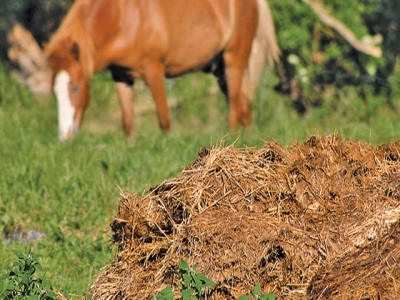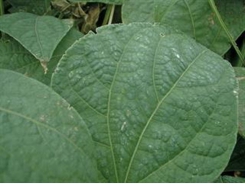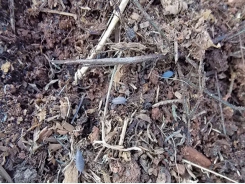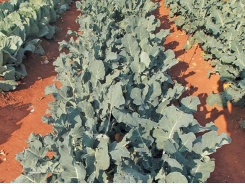The need for manure to be broken down

Suggested application rates for some common crops, including tomatoes and potatoes.
Kraal manure is often a mixture of manure and bedding straw, as seen here. Manure is an organic fertiliser and the nutrients it contains are not immediately available to plants. To release these nutrients, the manure must be decomposed or broken down by tiny organisms in the soil.
These break down the manure more rapidly when the soil is warm and moist. So, if manure is applied in winter, when the soil is cold and dry, little may happen. But when the weather warms up and it rains, the manure will be broken down rapidly. Within a few days, nutrients are released to the soil, where they can be absorbed by plant roots.
Studying the nutrients in manure
To ascertain the nutrient content of manure, researchers at the University of Fort Hare analysed samples from a variety of kraals in the central Eastern Cape. They found that a heaped, modestly compacted wheelbarrow-load of kraal manure contained, on average, 0,6kg nitrogen (N), 0,2kg phosphorus (P) and 0,8kg of potassium (K).
This quantity of manure weighed about 75kg, made up of 15kg water and 55kg dry manure. (The wheelbarrow was the high-sided type typically used by builders for mixing cement.)
To better understand the nutrient content of manure, we need to understand the formulas used in describing fertiliser mixtures. An example is 3:2:1 (25).
The ‘3:2:1’ indicates the proportion of nitrogen, phosphorus and potassium in the fertiliser. The ‘(25)’ component is the concentration of pure N, P and K present in the fertiliser expressed as a percentage.
Therefore, every 100kg of 3:2:1 (25) fertiliser mixture contains 25kg of pure nutrients consisting of a combination of N, P and K. The higher the number in brackets, the more concentrated the fertiliser mixture.
The same formula can be used to describe kraal manure. In the central Eastern Cape, the average formula for kraal manure was found to be 3:1:4 (3).
Lower concentration of nutrients
The 3:1:4 component means that these nutrients occur in the ratio three parts N, one part P and four parts K. The (3) indicates that in every 100kg of manure there is a total of 3kg of pure nutrients. In other words, the concentration of nutrients in kraal manure is relatively low.
The nutrients in kraal manure are one tenth as concentrated as in the chemical fertiliser mixture 3:2:1 (30).
Put another way, you would have to apply 1 000kg of kraal manure to supply the same quantity of nutrients found in 100kg of chemical fertiliser mixture.
The concentration of nutrients in kraal manure depends on several factors, the most important of which is the soil content of the manure.
The more soil the manure contains, the lower its nutrient concentration and the more you have to apply to the land to provide the same quantity of nutrients.
Application, and percentage of soil
For practical purposes, all the suggestions in this series are based on kraal manure containing about 60% of soil by weight to which the formula 3:1:4 (3) applies.
If you are working with manure that contains little soil, you can reduce the amount recommended here. It is better to play safe, however, and follow the application rates suggested in Tables 1 and 2.
If the soil content of your kraal manure is high (visibly much more soil than organic material), increase the rates recommended in Tables 1 and 2 for optimal results.
Source: Van Averbeke, W and Yoganathan, S: ‘Using Kraal Manure as a Fertiliser’, department of agriculture and the Agricultural and Rural Development Research Institute, Fort Hare.
Related news
Tools

Phối trộn thức ăn chăn nuôi

Pha dung dịch thủy canh

Định mức cho tôm ăn

Phối trộn phân bón NPK

Xác định tỷ lệ tôm sống

Chuyển đổi đơn vị phân bón

Xác định công suất sục khí

Chuyển đổi đơn vị tôm

Tính diện tích nhà kính

Tính thể tích ao




 Beware of that foliar feed mixture!
Beware of that foliar feed mixture!  How to fertilise a crop correctly
How to fertilise a crop correctly